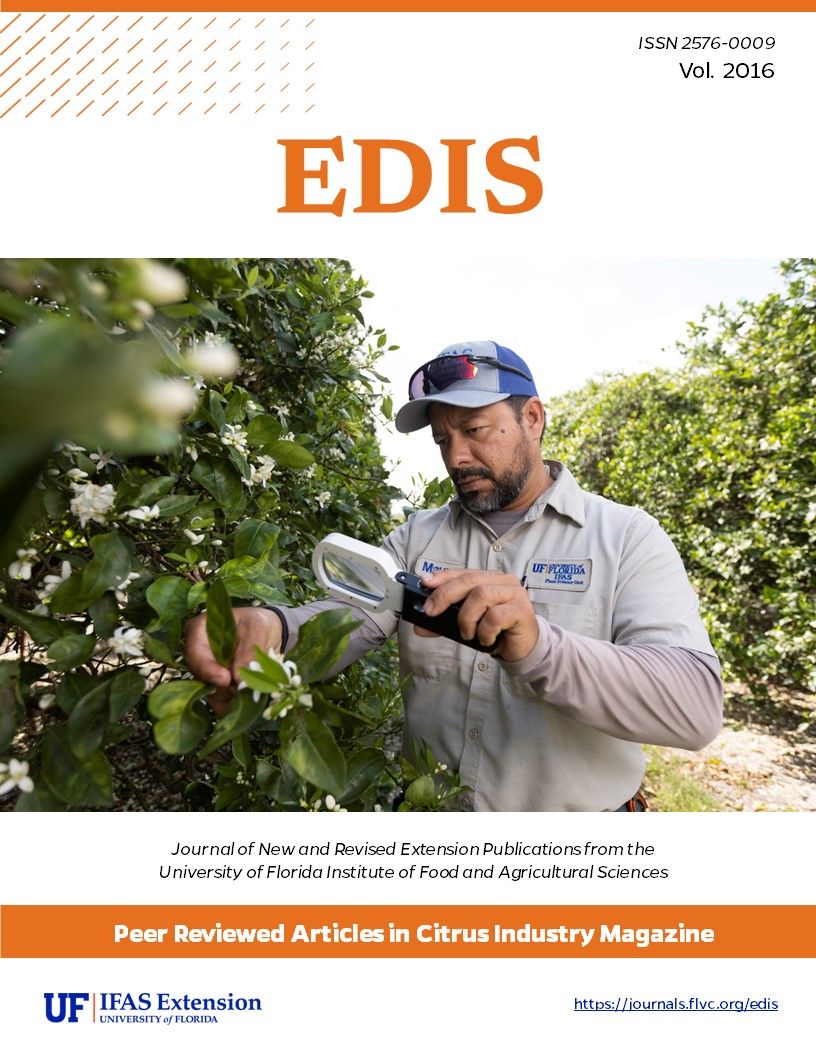Abstract
There is an urgent need for strategies to sustain production of citrus trees affected by HLB without depletion to our water resources. Understanding the role of evapotranspiration (ET) in Huanglongbing (HLB) affected trees is critical for determining if changes in water management of commercial citrus orchards are necessary. Water use with sensors and model simulation reduced average monthly water use by approximately 11 to 18% for an average savings of approximately 14% from the conventional irrigation practice. Fruit yields for all three irrigation schedules were not significantly different in 2012/2013 or 2013/2014 and were similar to the initial year. A study was conducted at the SWFREC using lysimeters filled with Immokalee fine sand. Hamlin and Valencia on Carrizo trees were planted in twelve weighing lysimeters of each variety (6-HLB infected and 6-non-infected trees) for a total of 24 lysimeters to determine daily tree water use. Results from the two year study showed significant reduction in water use of approximately 25% for infected trees when compared to non-infected ones. Mature orange trees located in three commercial groves at Avon Park, Arcadia, and Immokalee were irrigated for two years with three irrigation regimes including daily, IFAS recommendation, and intermediate irrigation schedules. There was significant difference in tree leaf densities as affected by irrigation scheduling, resulting in greater measured leaf area with daily and intermediate irrigation schedules than trees with IFAS recommended irrigation schedules. Higher leaf densities were at least partially responsible for significantly less leaf drop for the daily irrigation treatment for all sites in 2014. Although adoption of more frequent, lower water amount irrigation schedules produced a clear improvement in water uptake at the three sites, improvement in canopy density and yield did not occur until the second year, and although yields were higher in the second year for the more frequent irrigation schedule they were only significantly greater at one site.Unless otherwise specified, articles published in the EDIS journal after January 1, 2024 are licensed under a Creative Commons Attribution-NonCommercial-NoDerivs 4.0 International (CC BY-NC-ND 4.0) license.

